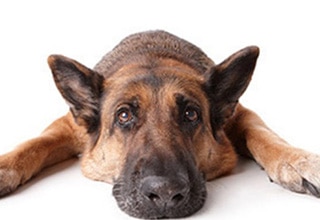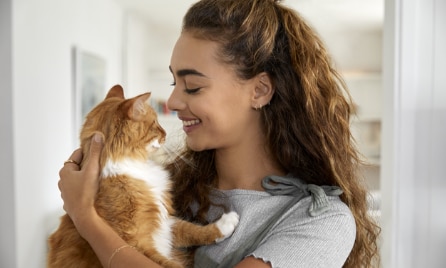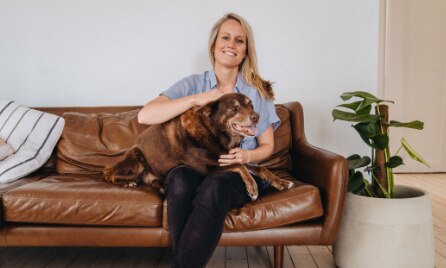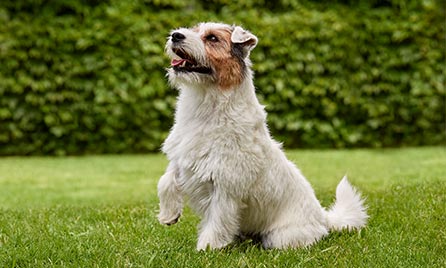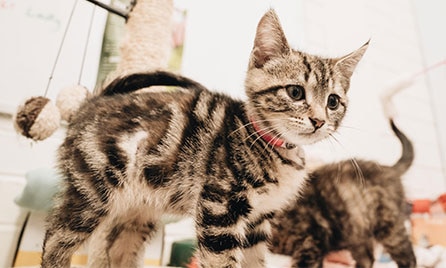- text
-
† Offer available to new Everyday Pet Insurance policyholders, and is limited to 1 membership per eligible policy. The free membership offer (valued at $199p.a) is from the date of your policy commencement, provided your Everyday Pet Insurance policy remains active. You are not eligible to redeem the free membership subscription for cash or credit. VetAssist is a separate subscription based service to the Everyday Pet Insurance product, and is provided independently by Everyday Insurance third party service provider, VetChat Services Pty Ltd (VetChat). Click here for full VetAssist Service terms and conditions. Everyday Insurance reserves the right to vary or remove this offer at any time and will provide reasonable notice of any such changes.
Vet tips for Diarrhoea and vomiting in puppies and kittens.
Diarrhoea and vomiting are the most common reasons Everyday Pet Insurance customers choose to use VetAssist.*
Let’s start with some definitions. Diarrhoea basically means that the stools are watery and can no longer be easily picked up, and vomiting simply describes what happens when stomach contents e.g food or bile is forcefully coming back up the mouth.
Both are symptoms of an unhappy gastrointestinal tract and can be the result of many underlying causes. When these happen together, it’s referred to as gastroenteritis which is stomach and intestinal inflammation.
Some of the underlying causes of gastroenteritis in a puppy or kitten might be:
Infectious disease e.g bacteria, viruses, parasites
Parasites e.g intestinal worms
Poisoning
Gut problems e.g inflammatory bowel disease, intussusception, tumours, obstructions, food intolerance or food allergies
Metabolic disease
Dietary change – there’s a need for gradual transitioning to new foods
Stress induced
Dietary indiscretion – what many pet owners know all too well. Some will eat anything and everything!
The response needed will greatly change based on the severity and underlying cause.
What do you do if your pet has vomiting or diarrhoea?
Monitor closely
Vomiting and diarrhoea can lead to fluid loss and electrolyte imbalance, even when they’ve only had it for a day. Puppies and kittens can become dehydrated easily, so it’s always better to lean to the side of caution. If your pet is not feeling well and has vomiting and/or diarrhoea, please speak to a Veterinarian immediately (see below).
Take away the food
We don’t want to feed a pet in the early stages of vomiting and diarrhoea for a minimum of 6 hours – sometimes up to 24 hours – it really depends on the age and health of your pet. Having a break allows their tummy to rest which will usually help slow down the vomiting and diarrhoea.
Speak to a Vet
If the diarrhoea and/or vomiting continues or your pet is ill e.g they are lethargic, not eating, unable to keep water down etc, then please seek immediate Veterinary attention. They need help!
Hydration and dietary management
If no vomiting has occurred for six or more hours, frequent small amounts of water or electrolyte solution are needed. You can also introduce small portions of digestible bland food if your pet is keeping liquid down. Speak to a Vet to have the best dietary plan for your pet. The bland food should be given for 3-5 days, followed by a very slow transition to their regular balanced diet.
Isolate from other pets
In case there’s an infectious cause, we need to isolate the pet from other pets to help contain it. Also, this provides your pet with rest and quiet to aid recovery.
Is this serious?
Keep an eye out for the symptoms below which would indicate your pet needs to see the local Vet for a hands on examination as soon as possible.
Your pet is unwell – seems tired or is not eating food
They are continually vomiting in a short period, or if they are not drinking or keeping water down
You see blood in the stool or large amounts of mucous and it is becoming more watery
Get a quote in minutes.
Related articles.
Please note: Not all conditions, vet visits and treatments are covered by Everyday Pet Insurance. Refer to the Product Disclosure Statement for details of coverage.
*According to data from February 2019 to September 2021. Coverage of these items are subject to exclusions and policy
- text
-
Everyday Pet Insurance policies entered into for the first time prior to 17 July 2023 and subsequent renewals of those policies are issued by The Hollard Insurance Company Pty Ltd ABN 78 090 584 473, AFSL 241436 (Hollard), arranged and administered by PetSure (Australia) Pty Ltd ABN 95 075 949 923, AFSL 420183 (PetSure) and promoted and distributed by Hollard’s Authorised Representative (AR) Woolworths Group Limited ABN 88 000 014 675, AR 245476 (Woolworths). Everyday Pet Insurance policies entered into for the first time on or after 17 July 2023 and subsequent renewals of those policies are issued by PetSure and promoted and distributed by PetSure’s AR, Woolworths. Any advice provided is general only and does not take into account your individual objectives, financial situation or needs. Please consider the Product Disclosure Statement (PDS) to ensure this product meets your needs before purchasing, or choosing to continue with the product. PDS and Target Market Determination available at insurance.everyday.com.au/pet-insurance.
